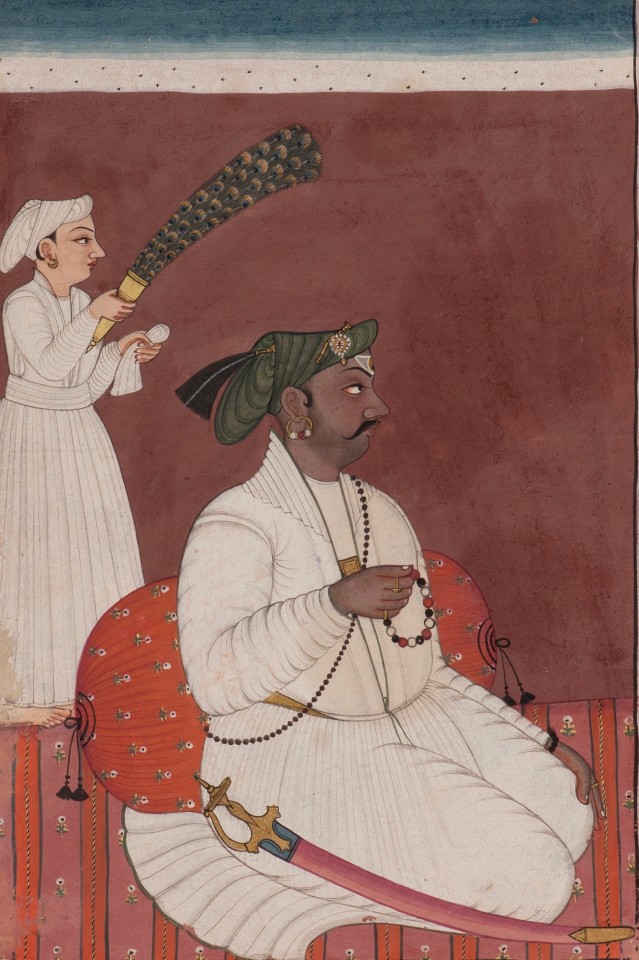Mandi, India
Tempera on paper
Circa 1760
The portrait depicts Raja Sidh Sen of Mandi (r. 1684-1727) who is believed to have lived to one hundred years of age. He was a much loved ruler and warrior credited with supernatural powers. It was widely believed that he could crush a coconut in the palm of his left hand, or rub the inscription off a coin simply by pressing it between his forefinger and thumb. It was said that a magical amulet that he wore around his neck enabled him to fly to the source of the Ganges from Mandi each morning and to return in time to attend to affairs of state. Despite his legendary status the historical sources agree that Sidh Sen was both a man of giant stature, and a religious man, whose devotions to Shiva and the Goddess were exemplary.
In this portrait the Raja is dressed in a white jamawith an elaborate pleated collar. He wears a green turban, ornamented with a gold, pearl and ruby sarpech, and an ornamental tassle. The ruler is seen seated on a vertically striped rug of pink and white, adorned with regular flower motifs, he is supported by a large bolster cushion at his back. The Raja’s tulwarin a red scabbard rests across one thigh, a long string of rudrakshabeads crosses his chest and he holds a further string of prayer beads in his right hand. He sports a long curling moustache with heavy stubble covering his chin. An attendant, dressed in plain white, stands behind him holding a peacock fan.
Striped durries and a white strip of sky, dotted with tiny birds are features of Mandi Royal portraits throughout the 18thcentury, so it is frequently difficult to ascertain if the portraits are contemporary to the ruler or posthumous. However, Archer has suggested that when the birds in the sky are reduced to dots the portrait may be of a slightly later period (c.1750-1800). Equally, the feature of the attendant figure standing on the rug rather than appearing to stand below the raised dais, behind the rug may further suggest a later date. Despite the possibility that the work may have been created later than the earliest known portraits of the Raja the quality of the painting remains refined. Of particular note is the detailed shading along the pleats of the jama, and the elaborate treatment of the collar not frequently seen in the later copies of earlier prototypes.
